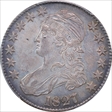pursuitofliberty 的钱币相册
O-112 (112.1), Well struck with ample luster, the light silver toning and copper and emerald iridescence through the stars enhance the eye appeal. This example is formerly from Sheridan Downey's MB Sale #50, where among other comments (paraphrased here), it's previous NGC 55 holder is mentioned and the tag has been retained.
O-112 (112.1), Well struck with ample luster, the light silver toning and copper and emerald iridescence through the stars enhance the eye appeal. This example is formerly from Sheridan Downey's MB Sale #50, where among other comments (paraphrased here), it's previous NGC 55 holder is mentioned and the tag has been retained.
O-103 (103.1), ex-Herrman, ex-Kaminski. Golden olive grey toning graces attractive luster, powerful strike and very few marks.
O-103 (103.1), ex-Herrman, ex-Kaminski. Golden olive grey toning graces attractive luster, powerful strike and very few marks.
O-102 (102.1); formerly from MB55, Lot#60 where it was described as; "An absolutely charming example of this scarce Red Book variety. Lovely pearl-grey toning sparkles with luster. The O.102 is a common die pair, but only early die states appear with the Experimental XXX Edge. The coin is everything you expect and hope for in a CAC approved AU55."
O-102 (102.1); formerly from MB55, Lot#60 where it was described as; "An absolutely charming example of this scarce Red Book variety. Lovely pearl-grey toning sparkles with luster. The O.102 is a common die pair, but only early die states appear with the Experimental XXX Edge. The coin is everything you expect and hope for in a CAC approved AU55."
O-109a. Strong and attractive luster with bright blues and burgundy peripherals fading to brighter centers. The reverse die cracks are strong and pronounced, but the small crack adjacent the left stand of the N is not present, nor are the die chips on the arrowheads found on later and more difficult "b" die state.
O-109a. Strong and attractive luster with bright blues and burgundy peripherals fading to brighter centers. The reverse die cracks are strong and pronounced, but the small crack adjacent the left stand of the N is not present, nor are the die chips on the arrowheads found on later and more difficult "b" die state.
O-111a (111.4), ex-Sears, Iridescent rose and turquoise blend with antique grey. Softly struck at the rims, typical of the die state.
O-101a (101.8), Original example with excellent surfaces, color and skin over thick luster. From the Burrowing Owl Collection.
O-101a (101.8), Original example with excellent surfaces, color and skin over thick luster. From the Burrowing Owl Collection.
O-108 (108.3), pronounced VLDS in OGH from MB59 - "Shimmering, unbroken luster is this coin’s calling card. The late die state weakened the stars and dentils. Happily, Liberty’s curls and drapery lines are well detailed. The reverse displays a marvelous vertical die break, rim to rim. Clash marks surround the devices. The demand for high grade 1810s is unabated! This coin has been off the market since the consignor acquired it in October 1991."
O-108 (108.3), pronounced VLDS in OGH from MB59 - "Shimmering, unbroken luster is this coin’s calling card. The late die state weakened the stars and dentils. Happily, Liberty’s curls and drapery lines are well detailed. The reverse displays a marvelous vertical die break, rim to rim. Clash marks surround the devices. The demand for high grade 1810s is unabated! This coin has been off the market since the consignor acquired it in October 1991."
O-101 (101.1), Crusty original caky golden bronze example with ample luster and attractive surfaces.
O-103 (103.2), lovely lilac, rose and bright golden colors bloom over handsome surfaces and pleasing luster. I crossed this from an NGC 58 holder, and consider it close to that grade. On any given day.
O-102a (102.2), ex Stewart, ex Herrman, Attractive luster and pleasing surfaces graced with iridescent rim toning, fading to natural silver centers. The coin obviously sat in a kraft envelope for some time as evidenced by the high point coloration.
O-108a (108.3), ex-Long, One of my favorite coins, for sure. From Sheridan Downey's MB#54 where he described as such, "Delicious iridescent toning fails to obscure the coin’s vibrant luster. If you enjoy bust halves you will love this 1813. Struck from clashed dies, the surfaces are free of circulation ticks. A double profile at Liberty’s nose adds character. My only question: why not a gold CAC sticker?"
O-108a (108.3), ex-Long, One of my favorite coins, for sure. From Sheridan Downey's MB#54 where he described as such, "Delicious iridescent toning fails to obscure the coin’s vibrant luster. If you enjoy bust halves you will love this 1813. Struck from clashed dies, the surfaces are free of circulation ticks. A double profile at Liberty’s nose adds character. My only question: why not a gold CAC sticker?"
O-101a. Late die state with a spectacular clash below the bust, this example features warm color and pleasing surfaces with ample luster for the grade.
O-101a (101.2), ex-Herrman, ex-Summers, A spectacular array of russet reds and vibrant aquamarine and blues grace ample luster.
O-101a (101.2), ex-Herrman, ex-Summers, A spectacular array of russet reds and vibrant aquamarine and blues grace ample luster.
O-101.a (101.4), Crisply struck with sharp features and soft luster, shaded by a graphite-dove grey patina.
O-101.a (101.4), Crisply struck with sharp features and soft luster, shaded by a graphite-dove grey patina.
O-108a (108.5), from Sheridan Downey where he described as "The silver-grey toning is original; luster flows across the fields. PCGS cannot resist downgrading this die state because of striking weakness. Beware the R.1 rarity designation. High grade examples of this Red Book staple are rare."
O-108a (108.5), from Sheridan Downey where he described as "The silver-grey toning is original; luster flows across the fields. PCGS cannot resist downgrading this die state because of striking weakness. Beware the R.1 rarity designation. High grade examples of this Red Book staple are rare."
O-101a (101.2), ex Hamilton, ex Chalkley. Form the Hamilton Sale "Bright luster complements the silver-rose surfaces, imparting bold eye appeal and eminent collectability. This piece was described in the Chalkley Collection as being "especially well struck in the centers," which we agree with. Needless to say, this is a coin that many Bust half nuts would love to add to their collections."
O-103a (103.4), Silver-grey with touches of amber and russet, with strong, original luster. A curious example struck from a pair of VLDS (Very Late Die State) dies, which condition is sometimes referred to as the 103'b' (although Overton never recognized a 'b' state for this marriage). The Obverse die progression has went from the 191.7 "punctuated date", to a point where the original Die Dot that shows the punctuation is no longer visible, and then to a point where a new smaller "Dot" appears in a different place than the original (lower and to the right, closer to the 7), and then that "Dot" also fades away, with the stars becoming more drawn to the segments. In this case, the smaller "Dot" is still visible (barely), but with the stars noticeably drawn enough, that after some back and forth with members of the BHNC, I have it listed as a 103.4 for my census, the latest state for the die. Additionally, it should be noted, after careful study, I do not believe the newer "Dot" is a tooling mark like the first is suspected to be, but is a tight grouping of rust pits (I think I count three prominent ones). This Obverse Die was later used for the O-105 remarriage. Finally, on another interesting side note, this is also the Reverse Die for the famous 1817/4 Die Marriage (note the I's in UNITED and AMERICA missing the lower right serifs, causing them to look somewhat like J's). Some of the reverse letters and the lower olive leaf tips are also drawn strongly into the segments, and the clashing beneath the claws and through 50 C. is prominent.
O-103a (103.4), Silver-grey with touches of amber and russet, with strong, original luster. A curious example struck from a pair of VLDS (Very Late Die State) dies, which condition is sometimes referred to as the 103'b' (although Overton never recognized a 'b' state for this marriage). The Obverse die progression has went from the 191.7 "punctuated date", to a point where the original Die Dot that shows the punctuation is no longer visible, and then to a point where a new smaller "Dot" appears in a different place than the original (lower and to the right, closer to the 7), and then that "Dot" also fades away, with the stars becoming more drawn to the segments. In this case, the smaller "Dot" is still visible (barely), but with the stars noticeably drawn enough, that after some back and forth with members of the BHNC, I have it listed as a 103.4 for my census, the latest state for the die. Additionally, it should be noted, after careful study, I do not believe the newer "Dot" is a tooling mark like the first is suspected to be, but is a tight grouping of rust pits (I think I count three prominent ones). This Obverse Die was later used for the O-105 remarriage. Finally, on another interesting side note, this is also the Reverse Die for the famous 1817/4 Die Marriage (note the I's in UNITED and AMERICA missing the lower right serifs, causing them to look somewhat like J's). Some of the reverse letters and the lower olive leaf tips are also drawn strongly into the segments, and the clashing beneath the claws and through 50 C. is prominent.
O-101 (101.1), Natural dirty grey-gold surfaces with pleasing remaining luster
O-101 (101.1), Natural dirty grey-gold surfaces with pleasing remaining luster
O-108 (108.1), Lovely dove gray, russets and blues fade to lighter centers on this handsome "Pincher 8's" variety. Crossed from NGC55
O-107a (107.3), Lovely original color graces attractive and abundant luster and pleasing surfaces. the obverse die crack is pronounced, and the Die State is rare as such.
O-103 (O-103.1), Handsome luster and peripheral toning
O-105. Deep and dusky color with russet orange highlights around the rim and stars, pleasing luster and a decidedly well-centered and powerful strike. Wonderfully original surfaces with a few minor ticks, scrapes and marks. Purchased from Gerry Fortin, from the Burrowing Owl Collection.
O-105. Deep and dusky color with russet orange highlights around the rim and stars, pleasing luster and a decidedly well-centered and powerful strike. Wonderfully original surfaces with a few minor ticks, scrapes and marks. Purchased from Gerry Fortin, from the Burrowing Owl Collection.
O-108 (108.1), from Sheridan Downey's Beaver Falls offering in March 2022, "A gossamer veil of gold toning suggests storage in a kraft envelope. Semi-prooflike surfaces, esp. the reverse, are a plus. Well struck. Nifty coin for your date or Red Book set. From Bowers & Ruddy's Jan. 14-17, 1981 sale of the Dr. W. James MacFarland Collection, lot 577 with tag."
O-104a (104.4); ex Prouty, ex Davignon, formerly MB55, Lot#82 where it was described as such; "Stack’s June 1977 Connecticut Art Museum Sale, lot 281 as Mint State. A last-minute consignment from Keith Davignon. The coin is breathtaking, featuring a glossy crust of “museum” toning, with halos of golden iridescence. Maybe a little cabinet friction under the toning. Maybe not. Prouty and Davignon found the coin irresistible. You will too."
O-104a (104.4); ex Prouty, ex Davignon, formerly MB55, Lot#82 where it was described as such; "Stack’s June 1977 Connecticut Art Museum Sale, lot 281 as Mint State. A last-minute consignment from Keith Davignon. The coin is breathtaking, featuring a glossy crust of “museum” toning, with halos of golden iridescence. Maybe a little cabinet friction under the toning. Maybe not. Prouty and Davignon found the coin irresistible. You will too."
O-115 (115.2); ex-Davignon, from Sheridan Downey MB57 "A third 1822 from Keith’s hoard of fantastic 1822s. I find it hard to believe that he is letting them go. This pristine coin oozes luster beneath a protective layer of antique grey dirt toning. Keith’s wry comment is worth repeating, “Put this one under a halogen lamp and enjoy the show.” He has enjoyed it since March 2012 when it was offered in Stack’s/Bowers Baltimore auction, lot 3263."
O-115 (115.2); ex-Davignon, from Sheridan Downey MB57 "A third 1822 from Keith’s hoard of fantastic 1822s. I find it hard to believe that he is letting them go. This pristine coin oozes luster beneath a protective layer of antique grey dirt toning. Keith’s wry comment is worth repeating, “Put this one under a halogen lamp and enjoy the show.” He has enjoyed it since March 2012 when it was offered in Stack’s/Bowers Baltimore auction, lot 3263."
O-103 (103.1); ex Keigwin, where he described as "A sunset of deep amber/orange at the rims transitions to pale gold and silver center. Bountiful luster too. The surfaces are free of any significant distractions. The coin was well centered and evenly struck with complete stars, denticles, legend, scroll. Even the often weak centers are respectably defined. A wonderful coin with great eye appeal."
O-103 (103.1); ex Keigwin, where he described as "A sunset of deep amber/orange at the rims transitions to pale gold and silver center. Bountiful luster too. The surfaces are free of any significant distractions. The coin was well centered and evenly struck with complete stars, denticles, legend, scroll. Even the often weak centers are respectably defined. A wonderful coin with great eye appeal."
O-102 (102.1), Soft russets and golden greys over nice luster and semi PL reverse fields
O-112a (112.2), ex-Keigwin, "Lovely grey dirt, untouched, unspoiled." This was part of a six coin lot that Sheridan Downey bought (or took on consignment) in 2018, which he labeled as the Manheim coins. These are parts on two notes he sent along over the course of the transaction; “I purchased the three half dollars in 1975 from the last descendent of the Ensminger family of Manheim. The Ensminger's were prominent business people in Manheim starting circa 1790’s. Samuel A. Ensminger, born 1763, opened an Apothecary Shop in Manheim circa 1793. He and family members, besides being in the drug store business, also were photographers, tinsmiths, surveyors, scriveners, and published The Sun, Manheim’s first newspaper (1841). The person from whom I purchased the coins had a treasure trove of Ensminger heirlooms but almost nothing was sold until she passed away in 1991. Fortunately, for me, I worked with her husband in a local office, and it was only because of this that I was given the opportunity to purchase the half dollars. In 1991, at the public estate auction, there were so many items to be sold - and the sale was so poorly conducted - that local treasures were not recognized and properly represented to bidders, resulting in history and items being lost. Her 1991 estate sale was a disaster. What should have taken three days of selling was sold in one day.” He followed-up with a second message. I like the last sentence. “The pictures look great, thanks. I’ll tell you another story. For a few years I lost track of where I placed the 1824 half dollar but I knew that somewhere among my numismatic items it will be found. I only located it about six months ago in a coin box with a superb New Jersey colonial cent and some miscellaneous items. I considered the 1824 slightly less in grade to the superb 1827 and 1831 but I liked the sharp appearance of the die crack and probably separated the coins for further checking. For a lot of years, my collecting interest has been the history connected to items. Whenever I acquired an item, numismatic, antique, or Americana, if there was a story to be preserved, I wanted to record it. To me, history expresses the real value of items." Attractive dusky golden-grey with touches of russets and greens, unspoiled luster and splendid surfaces. The strike is bold and the obverse crack is quite pronounced. A magnificent example.
O-112a (112.2), ex-Keigwin, "Lovely grey dirt, untouched, unspoiled." This was part of a six coin lot that Sheridan Downey bought (or took on consignment) in 2018, which he labeled as the Manheim coins. These are parts on two notes he sent along over the course of the transaction; “I purchased the three half dollars in 1975 from the last descendent of the Ensminger family of Manheim. The Ensminger's were prominent business people in Manheim starting circa 1790’s. Samuel A. Ensminger, born 1763, opened an Apothecary Shop in Manheim circa 1793. He and family members, besides being in the drug store business, also were photographers, tinsmiths, surveyors, scriveners, and published The Sun, Manheim’s first newspaper (1841). The person from whom I purchased the coins had a treasure trove of Ensminger heirlooms but almost nothing was sold until she passed away in 1991. Fortunately, for me, I worked with her husband in a local office, and it was only because of this that I was given the opportunity to purchase the half dollars. In 1991, at the public estate auction, there were so many items to be sold - and the sale was so poorly conducted - that local treasures were not recognized and properly represented to bidders, resulting in history and items being lost. Her 1991 estate sale was a disaster. What should have taken three days of selling was sold in one day.” He followed-up with a second message. I like the last sentence. “The pictures look great, thanks. I’ll tell you another story. For a few years I lost track of where I placed the 1824 half dollar but I knew that somewhere among my numismatic items it will be found. I only located it about six months ago in a coin box with a superb New Jersey colonial cent and some miscellaneous items. I considered the 1824 slightly less in grade to the superb 1827 and 1831 but I liked the sharp appearance of the die crack and probably separated the coins for further checking. For a lot of years, my collecting interest has been the history connected to items. Whenever I acquired an item, numismatic, antique, or Americana, if there was a story to be preserved, I wanted to record it. To me, history expresses the real value of items." Attractive dusky golden-grey with touches of russets and greens, unspoiled luster and splendid surfaces. The strike is bold and the obverse crack is quite pronounced. A magnificent example.
O-110 (110.1), R1; ex-Meyer. Abundant and pleasing luster radiates though russet grey green colors and appealing, nearly mark free surfaces.
O-110 (110.1), R1; ex-Meyer. Abundant and pleasing luster radiates though russet grey green colors and appealing, nearly mark free surfaces.
O-116 (116.1), ex-Osborne, formerly MB55, where is was described as; "A fantastic coin. Original to its core. My favorite coin in the Osborne consignment. The O.116 was a mid-level R.5 for many years. Quality examples such as this are supremely rare. The immaculate surfaces and antique toning are to die for. The coin lay in a New England Museum for decades, surfacing in Stack’s/Bowers’ May 2013 New Orleans National Money Show sale (lot 337) along with a few other stunning bust half-dollars. Tim found the coin irresistible and was happy to land it ..."
O-116 (116.1), ex-Osborne, formerly MB55, where is was described as; "A fantastic coin. Original to its core. My favorite coin in the Osborne consignment. The O.116 was a mid-level R.5 for many years. Quality examples such as this are supremely rare. The immaculate surfaces and antique toning are to die for. The coin lay in a New England Museum for decades, surfacing in Stack’s/Bowers’ May 2013 New Orleans National Money Show sale (lot 337) along with a few other stunning bust half-dollars. Tim found the coin irresistible and was happy to land it ..."
O-107 (107.2), from Sheridan Downey, "The light grey toning comes with flashes of gold at the peripheries. It was the set piece for Rex and Cindy Phillips' notable collection, offered at Heritage's Aug. 2017 Denver ANA Sale. This was lot 5011, described in part as '... an early die state example with crisply struck devices and smooth, somewhat reflective fields.'"
O-107 (107.2), from Sheridan Downey, "The light grey toning comes with flashes of gold at the peripheries. It was the set piece for Rex and Cindy Phillips' notable collection, offered at Heritage's Aug. 2017 Denver ANA Sale. This was lot 5011, described in part as '... an early die state example with crisply struck devices and smooth, somewhat reflective fields.'"
O-114a (114.4), ex-Keigwin, Attractive luster with hardly a mark. Not as flashy as some but it's wholesome and pristine.
O-114a (114.4), ex-Keigwin, Attractive luster with hardly a mark. Not as flashy as some but it's wholesome and pristine.
O-108a. Very original grey dirt crusty with an attractive look, and an interesting die state. A3 not fully filled, and base broad and deformed.
O-108a. Very original grey dirt crusty with an attractive look, and an interesting die state. A3 not fully filled, and base broad and deformed.
O-116 (O-116.1), An attractive example with strong luster and touches of color in the stars and legend
O-120. Attractive bronze and grey beauty with a good skin, and consummate for the grade. By private treaty, formerly of the S.R Erickson Collection
O-120. Attractive bronze and grey beauty with a good skin, and consummate for the grade. By private treaty, formerly of the S.R Erickson Collection
O-122 (122.2), Attractive bronze patina with traces of green and aqua graces strong luster and pleasing surfaces
O-122 (122.2), Attractive bronze patina with traces of green and aqua graces strong luster and pleasing surfaces
O-104 (104.2), Gorgeous original luster and skin, great color, with some normal weakness for the marriage on the reverse. Just lovely. From David Kahn where it was shown as from the Hilltop Collection.
O-104 (104.2), Gorgeous original luster and skin, great color, with some normal weakness for the marriage on the reverse. Just lovely. From David Kahn where it was shown as from the Hilltop Collection.
Thick original skin of grey to graphite colors and a hint of deep golden highlights over pleasing surfaces.
Thick original skin of grey to graphite colors and a hint of deep golden highlights over pleasing surfaces.
O-107 (107.1), ex-Osborne, Caky luster bursts through the attractive russet and copper toning. A superb, original example with wonderful surfaces.
O-107 (107.1), ex-Osborne, Caky luster bursts through the attractive russet and copper toning. A superb, original example with wonderful surfaces.
O-101a (101.2), ex-Parsley, from SD's FPL where he described as, "Where's the rub? Here is a very high-end "58." The coin never saw circulation. Bold cartwheel luster and sharply struck. Lightly toned. This one has it all."
O-105 (105.2), Deep thick luster with fully original skin and an attractive mix of russets, golds and teal colors, much deeper on the reverse. By private treaty, however when formerly offered by David Kahn it was described with the following, "The die state is a little interesting, with this being a full "a" state, but for the missing die crack. I've studied Bust halves for over 35 years and never seen that crack."
O-103 (103.1), ex-Manevitz, Very attractive golden bronze with strong luster and attractive surfaces
O-103 (103.1), ex-Manevitz, Very attractive golden bronze with strong luster and attractive surfaces
O-108 (108.1), Original golden bronze with attractive luster and surfaces this example only made a partial trip through the Castaing machine (edge lettering machine that also upset the rims before striking). These are sometimes affectionally referred to as a "Guido".
O-108 (108.1), Original golden bronze with attractive luster and surfaces this example only made a partial trip through the Castaing machine (edge lettering machine that also upset the rims before striking). These are sometimes affectionally referred to as a "Guido".
O-115 (115.1), ex-Keigwin, ex-Ross, ex-Graham, ex-Gehring Prouty, Handsome deeper bronze with pleasing luster and surfaces, well struck and centered
O-115 (115.1), ex-Keigwin, ex-Ross, ex-Graham, ex-Gehring Prouty, Handsome deeper bronze with pleasing luster and surfaces, well struck and centered
O-101 (101.1), Crusty original grey dirt example with luster and surfaces befitting of a higher grade.
O-101 (101.1), Crusty original grey dirt example with luster and surfaces befitting of a higher grade.
O-109 (109.1), ex-Keigwin, Pleasing antique dusky bronze color highlights wonderful smooth luster and mostly mark-free surfaces.
O-109 (109.1), ex-Keigwin, Pleasing antique dusky bronze color highlights wonderful smooth luster and mostly mark-free surfaces.
O-108a (108.2) ex-Keigwin, but prior to that, Sheridan Downey, in MB56 said this; "A stunning coin! I sent it to CAC, expecting a gold sticker to be its reward. No matter. The glorious toning speaks for itself. The surfaces and luster are a delight. Here is an original coin, essentially without faults. I anticipate runaway bidding. From an old time collection, many years off the market." He's not wrong.
O-108a (108.2) ex-Keigwin, but prior to that, Sheridan Downey, in MB56 said this; "A stunning coin! I sent it to CAC, expecting a gold sticker to be its reward. No matter. The glorious toning speaks for itself. The surfaces and luster are a delight. Here is an original coin, essentially without faults. I anticipate runaway bidding. From an old time collection, many years off the market." He's not wrong.
O-101 (101.6), "Thoroughly original antique grey toning, obverse and reverse. Unbroken luster in the fields. Attractive iridescence through the stars and legend," as per Purchased from Sheridan Downey. Enough said.
O-101 (101.6), "Thoroughly original antique grey toning, obverse and reverse. Unbroken luster in the fields. Attractive iridescence through the stars and legend," as per Purchased from Sheridan Downey. Enough said.
O-101 (101.6), "Thoroughly original antique grey toning, obverse and reverse. Unbroken luster in the fields. Attractive iridescence through the stars and legend," as per Purchased from Sheridan Downey. Enough said.
O-110a (110.2), Lovely example with strong luster and lovely color, from from SD's MB#56, where he described as "Fully struck despite the later die-state. Drapery, cap, curls, clasp, feathers and claws are razor sharp. Bold luster with light amber toning through the stars and legend."
O-110a (110.2), Lovely example with strong luster and lovely color, from from SD's MB#56, where he described as "Fully struck despite the later die-state. Drapery, cap, curls, clasp, feathers and claws are razor sharp. Bold luster with light amber toning through the stars and legend."
O-107a (107.3) ex-Frederick, ex-Link, A soft golden-grey patina with patches of russet and aqua-blue graces full cartwheel luster and mark-free surfaces. From SD's MB#52 where he described as "...The die break through the date that Overton seems to require for the late die state is missing; PCGS nonetheless attributed the coin as O.107a. It was undoubtedly influenced by the worn, clashed dies and the presence of a small die chip on Liberty’s nose. Full cartwheel luster and mark-free surfaces support the AU 58 designation. Russ Logan quaintly referred to this intermediate die state as the one with “a mouse on the nose.” Logan owned one of two known 1814 platinum half-dollars, Judd 44. They were struck from the O.107 die pair. Since they do NOT have a mouse on the nose (or a die break between 81 of the date) we know that they were struck in 1814 at the Mint, not pieces de caprice, struck elsewhere from discarded dies."
O-112. Unquestionably original, with thick wonderful luster and deep antique toning over generally mark free surfaces.
O-102a (102.2), Abundant luster and attractive original color with a few ticks and abrasions, this is a premium example for the grade that would not look out of place with a higher numerical grade.
O-102a (102.2), Abundant luster and attractive original color with a few ticks and abrasions, this is a premium example for the grade that would not look out of place with a higher numerical grade.
O-101 (101.1), Caky golden bronze example with some remaining luster and pleasing surfaces.
O-101 (101.1), Caky golden bronze example with some remaining luster and pleasing surfaces.
O-101 (101.2), Thick, frosty and original luster with a natural silver-grey patina sprinkled with ample rust and russet colors clinging to the devices. The O-101 is the only overdate for the 19/8 that is considered the "Small 9" variety.
O-101 (101.2), Thick, frosty and original luster with a natural silver-grey patina sprinkled with ample rust and russet colors clinging to the devices. The O-101 is the only overdate for the 19/8 that is considered the "Small 9" variety.
O-101a (101.3), Mottled reds, russets, lilacs and blues adorn this minimally abraded and difficult overdate issue
O-104 (104.1), Excellent luster and interesting die rust in the field above the date, this came from SD's MB#56, where it was described as "Delicate pale gold toning enhances the bold cartwheel luster. Wonderfully smooth surfaces. The double profile is reasonably common on this date."
O-104 (104.1), Excellent luster and interesting die rust in the field above the date, this came from SD's MB#56, where it was described as "Delicate pale gold toning enhances the bold cartwheel luster. Wonderfully smooth surfaces. The double profile is reasonably common on this date."
O-106. Attractive original with a deep strike, and a thick and chalky skin hiding a somewhat proof-like fields and recesses.
O-106. Attractive original with a deep strike, and a thick and chalky skin hiding a somewhat proof-like fields and recesses.
O-106. Attractive original with a deep strike, and a thick and chalky skin hiding a somewhat proof-like fields and recesses.
O-117 (117.1), Gorgeous original, with deep crusty bronze with strong luster and virtually mark free surfaces. A prize.






















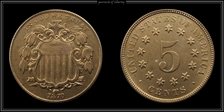











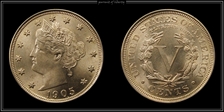



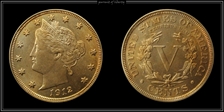









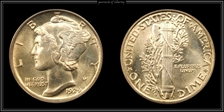
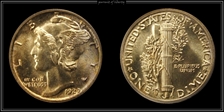










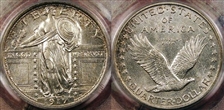
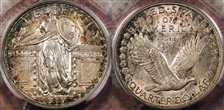
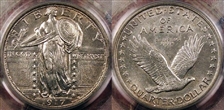















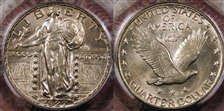








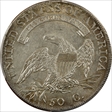
___P55cac___obv___c_album.jpg)
___P55cac___rev___c_album.jpg)
___P55cac___obv___c_album.jpg)
___P55cac___rev___c_album.jpg)

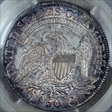

















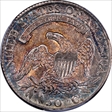


___obv___c_album.jpg)
___rev___c_album.jpg)

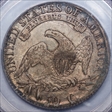

___P55cac___03_album.jpg)
___P55cac__04_album.jpg)









__P58cac___obv___c_album.jpg)
__P58cac___rev___c_album.jpg)






_P58cac___obv___c_album.jpg)
_P58cac___rev___c_album.jpg)


___P55cac___03_album.jpg)
___P55cac___04_album.jpg)



___P58cac___obv___c_album.jpg)
___P58cac___rev___c_album.jpg)

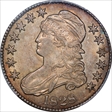


___P58___obv_album.jpg)
___P58___rev_album.jpg)






___P58___obv___c_album.jpg)
___P58___rev___c_album.jpg)
___P55cac___obv___c_album.jpg)
___P55cac___rev___c_album.jpg)



___P58cac___obv___c_album.jpg)
___P58cac___rev___c_album.jpg)







___P55cac___obv___c_album.jpg)
___P55cac___rev___c_album.jpg)
___P55cac___obv___c_album.jpg)
___P55cac___rev___c_album.jpg)
___P55cac___obv___c_album.jpg)
___P55cac___rev___c_album.jpg)

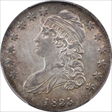

___P55cac___obv___c1_album.jpg)
___P55cac___rev___c_album.jpg)













___P58___obv___c_album.jpg)
___P58___rev___c_album.jpg)






___P55cac___03_album.jpg)
___P55cac___04_album.jpg)

___P55___obv___c_album.jpg)
___P55___rev___c_album.jpg)




